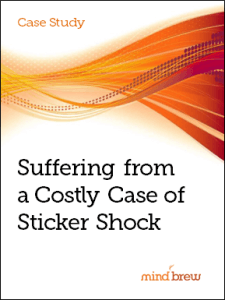Business management gurus love to quote Peter Drucker as saying, “Culture eats strategy for breakfast.” Whether or not Drucker actually said that exact sentence is a matter of some contention. However, it’s been repeated so often that it’s become part of the standard dogma.
And in our experience, this quote certainly rings true when it comes to pricing.
Even if you have the best pricing strategy in the world, it won’t do you any good if you have a resistant corporate culture. In battles between strategy and culture, culture wins every time.
Too often, pricing practitioners think that their jobs are nearly done after they’ve developed a killer strategy. After all, they reason, implementing the strategy should be the easy part.
They forget that there’s a step in between devising the strategy and putting it into practice. You first have to get everyone on board in support of your strategy—and that can be a lot more difficult than it sounds.
It’s a little like the process the federal government goes through in establishing a budget. First, the president comes up with a “strategy”—the budget that he wants Congress to implement. And then Congress does exactly what the president wants, right? No, of course not. Each member of Congress has his or her own ideas about how the government should be spending money, and the president is going to have to work really hard to convince them to do even a part of what he wants. In fact, we often judge presidents not by how good they are at coming up with strategic budget ideas but by how successful they are at persuading Congress to go along with those ideas.
A very similar process needs to take place in regards to your pricing strategy (although we sincerely hope that your corporate culture isn’t as divisive and dysfunctional as American politics). After you’ve come up with your ideas, you’ve got to sell them. And that means working within your culture to change the minds of the key thought leaders in your organization.
It’s tremendously difficult to change a corporate culture. In fact, Peter Drucker actually did say, “Company cultures are like country cultures. Never try to change one. Try, instead, to work with what you’ve got.”
That doesn’t mean you’re never going to be able to get your organization to do something different. It just means that you need to find a way to work with your culture instead of directly opposing it. In general, it requires leading people through all the steps that you went through when developing your strategy instead of trying to impose your ideas on them.
We have a particular technique that we have seen many organizations use to overcome a corporate culture that was initially resistant to new pricing ideas. The webinar Making Change Happen explores this technique in depth. It explains in detail exactly what you need to do to not only get people to accept new ideas, but to actually embrace them. If you’ve found that your culture has been eating your pricing strategy for breakfast, check out the webinar to learn how to start working within your culture instead of against it.














